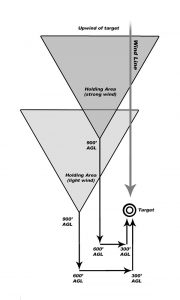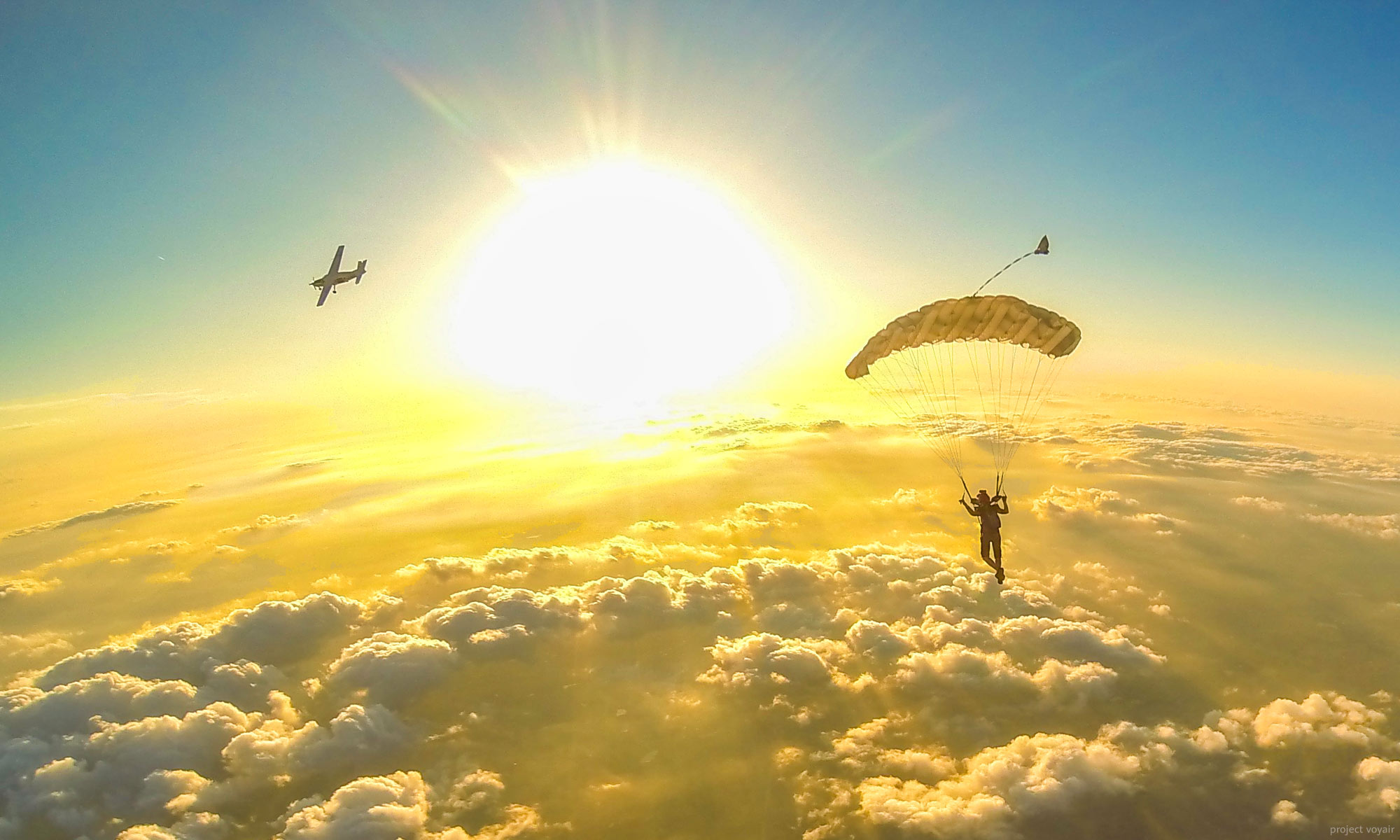One of the best things about skydiving today compared to some decades past is that we jump steerable parachutes. We have the ability to change our flight paths and land on target, which makes it a lot easier for us to land near the hangar and make lots of jumps in a day without quite the cardio workout of walking in from far-flung fields.
These steerable parachutes also make it possible for us to land on target in variable wind conditions, but we have to understand how the wind affects our canopy flight to fully take advantage of the situation.
Wind Speed vs. Airspeed vs. Groundspeed
The typical parachute in full flight has a forward airspeed of about 25 mph. Its groundspeed (speed across the ground), however, varies according to whether you are flying into the wind (holding) or running with the wind at your back. Let’s say we have a wind of 10 mph. If we’re holding into the wind, it’s slowing our groundspeed, so we get less forward movement as we descend. Subtract the 10 mph wind speed from your 25 mph airspeed, and your groundspeed is 15 mph.
If you’re running with the wind at your back, it is pushing you across the ground faster. So add that 10 mph to your 25 mph natural airspeed, and your groundspeed is now 35 mph. You might feel a little like Superman, flying across fields in a single… bound?… well, anyway. 🙂

Landing Pattern Adjustment
This variable groundspeed with winds clearly affects our flight patterns, because we can’t just turn in to the downwind, base, and final legs of our landing patterns at the same points on the ground and altitudes in different wind conditions and expect to land on the same target. What we should do is fly the same pattern with respect to our planned turn altitudes, but shift the entire pattern in an upwind direction in higher winds as in the diagram at right.
The higher the winds, the more upwind your pattern should shift, because your final leg into the wind will get shorter and shorter with more wind.

